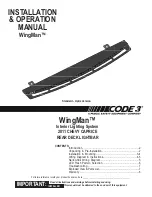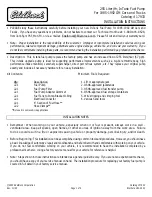
Important safety notes
Observe the important safety guidelines for the
driving safety system (
Y
page 69).
G
WARNING
If BAS is malfunctioning, the braking distance
in an emergency braking situation is
increased. There is a risk of accident.
In an emergency braking situation, depress
the brake pedal with full force. ABS prevents
the wheels from locking.
If BAS is malfunctioning, the
÷
warning lamp
lights up while the engine is running
(
Y
page 287) and the display shows a message
(
Y
page 265).
Braking
X
Keep the brake pedal depressed firmly until
the emergency braking situation is over.
ABS prevents any of the wheels from locking.
When you release the brake pedal, the brakes
function as usual again. BAS is deactivated.
EBD (electronic brake force distribu-
tion)
General notes
EBD monitors and controls the brake pressure
to the rear wheels. This enables EBD to improve
handling during braking.
Important safety notes
Observe the important safety guidelines for the
driving safety system (
Y
page 69).
G
WARNING
If EBD is malfunctioning, the rear wheels can
lock, e.g. under full braking. This increases the
risk of skidding and an accident.
You should therefore adapt your driving style
to the different handling characteristics. Have
the brake system checked at a qualified spe-
cialist workshop.
If EBD is malfunctioning, the
J
warning lamp
(
Y
page 285) lights up while the engine is run-
ning and the display shows a message
(
Y
page 265). Other driving systems and driving
safety systems then also fail.
ESP
®
(Electronic Stability Program)
General notes
ESP
®
monitors driving stability and detects
understeering or oversteering (skidding) in good
time. If ESP
®
detects that the vehicle is deviat-
ing from the direction desired by the driver, one
or more wheels are braked to stabilise the vehi-
cle. The engine output is also modified to keep
the vehicle on the desired course within physical
limits. ESP
®
can also stabilise the vehicle during
braking.
ESP
®
also monitors traction, i.e. power trans-
mission between the tyres and the road surface.
The integrated traction control supports you
when pulling away or accelerating on wet, slip-
pery or slick roads. Should the drive wheels spin,
traction control brakes them individually. In
addition, greater drive torque is transmitted to
the wheel or wheels with traction. If traction on
the road surface is not sufficient, even ESP
®
will
not allow you to pull away without difficulty. The
type of tyres and total weight of the vehicle as
well as the gradient of the road also play a cru-
cial role. Traction control remains active if you
deactivate ESP
®
.
If the
h
warning lamp in the instrument clus-
ter goes out before beginning the journey, ESP
®
is automatically active.
The
h
warning lamp in the instrument cluster
flashes when ESP
®
intervenes:
X
Do not deactivate ESP
®
under any circum-
stances.
X
when pulling away, only depress the acceler-
ator pedal as far as required
X
Adapt your driving style to suit the prevailing
road and weather conditions.
Important safety notes
Observe the important safety guidelines for the
driving safety system (
Y
page 69).
G
WARNING
If ESP
®
is malfunctioning it will not provide
any vehicle stabilisation. There is an
increased risk of skidding or of an accident.
70
Driving safety systems
Safety
Summary of Contents for V 200 d
Page 1: ...V Class Operating Instructions Mercedes Benz V Class...
Page 400: ...398...
Page 401: ...399...
Page 402: ...400...
Page 404: ...Order no 6463 7351 02 Part no 447 584 17 03 Z102 Edition 03 17 4475841703Z1028 4475841703Z102...
















































